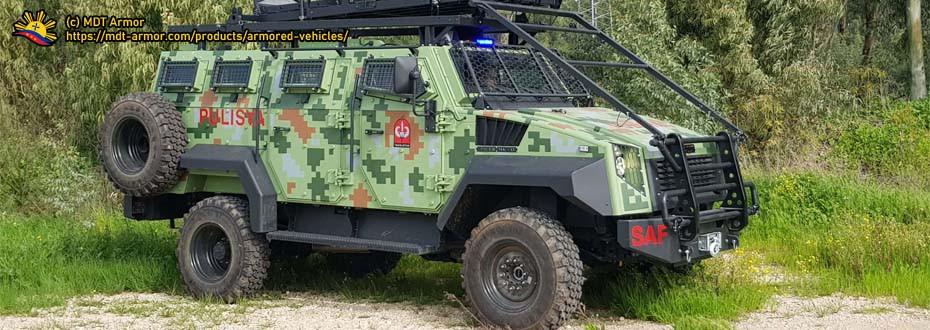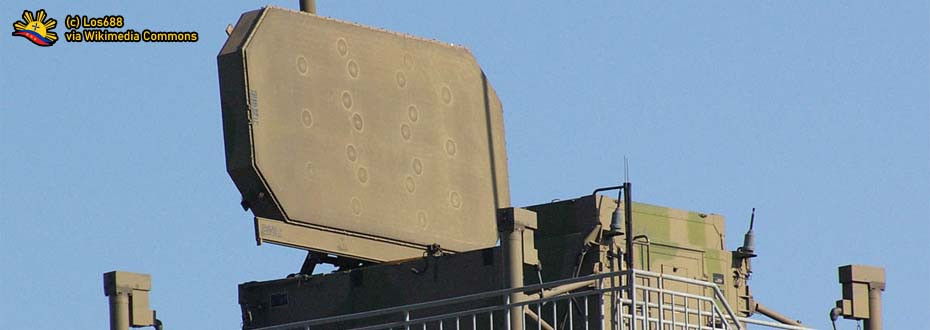This is the continuation of the series, and the last part that showcased all the activities that took place on the recently concluded Joint Exercise Balikatan 2022 between the Philippine Armed Forces and their counterparts from the United States Armed Forces, in the primary aim of interoperability and increased bond between allies in the Indo-Pacific region, especially in an increasing threat from a regional power like China.
RECAP FROM PART 1
 |
| An M-142 HIMARS or High Mobility Artillery Rocket System in position during the live fire exercise in Crow Valley, Capas Tarlac. Image got from Defense Visual Information Distribution Service. |
Before reading the details in this article, we suggest you will first read the highlights of the Joint Bilateral Exercise Balikatan 2022 Part 1, wherein it showcased the activities that took place during the first half of the bilateral military activity between the Philippine and United States Armed Forces, including some of the first time operations included in the largest iteration of the exercise that took place earlier this year.
To summarize the portions of that article, it discussed the preparation and arrival of troops and military hardware of the United States Armed Forces that were about to take part in the joint exercises, which it has done through the deployment of cargo aircraft like the known C-17 Globemaster and MV-22B Ospreys of both the United States Air Force and the United States Marine Corps, respectively, aside from the ones from the sea like those onboard the USS Keith (ESB-5).
Also, flight operations onboard USS Keith (ESB-5) off the coast of Luzon north of the country also took place, wherein the United States Marine Corps, along with the United States Navy onboard the vessel, used the AH-1Z Viper, UH-1Y Venom Combat Utility Helicopters, and Sikorsky CH-53 Sea Stallion Heavy-Lift Helicopters as it augments the Amphibious Operations from a companion Landing Dock ship, USS Ashland (LSD-48) to deploy troops and military hardware from ship to shore.
For the first time, this year's Balikatan Exercise includes the first amphibious deployment of a PAC-3 Patriot Missile System, itself being capable of eliminating threats that include cruise missiles, advanced forms of military aircraft, and ballistic missiles, wherein it has provided the significant cover over the airspace of Northern Luzon, especially that there has been increasing threat coming from a regional power like the People's Republic of China.
One of the primary highlight of the exercise that has discussed in the previous article is the Combined Arms Live-Fire Exercise, of which the United States Army deployed its M-142 HIMARS or High Mobility Artillery Rocket System (see image above), as the showcase of firepower coming from these sophisticated systems, along with those coming from AH-64 Apache Helicopters has shown between participants of both countries.
The first part ended in an Amphibious Operation that took place in Claveria, Cagayan in Northern Philippines, wherein S-70i Combat Utility Helicopters of the Philippine Air Force, alongside Sikorsky CH-53 Sea Stallion Heavy Lift Helicopters deployed Marine troops from both countries, and the amphibious landing of the Philippine Marine Corps' KAAV-7 that were deployed from BRP Tarlac (LD-601) anchored just off the shoreline into the sea.
In this article, we will cover other events throughout the Balikatan Exercise 2022 that have not discussed in part 1, especially the ones that also have its own share of story and images that show active participation between the Philippine and U.S. troops that took part in this bilateral military activity, and all the interoperability and subject exchange that happened all throughout the rest of the joint exercise.
SPECIAL OPERATIONS MARITIME SECURITY OFF THE COAST OF PALAWAN
 |
| Philippine Navy Special Operations Group (NAVSOG), along with the United States Navy SEALs and Australian Operators with 2nd Commando Regiment, conduct maritime security operations off the coast near El Nido, Palawan. (c) Defense Visual Information Distribution Service. |
Military troops belonging to the Philippine Navy Special Operations Group or NAVSOG, along with their counterparts in the United States Navy SEALs and Australian Operators with 2nd Commando Regiment, conducted a joint special operations maritime security in the country's westernmost frontier territory of Palawan, an area near to the highly contested West Philippine Sea.
In this following image, troops who are taking part in the activity deployed and searched an offshore platform as part of the exercise that emphasizes maritime security, wherein such oil platforms once served as gas extraction platforms that have put out of service and has recently used as Littoral Monitoring Station of the Philippine Navy as part of securing the West Philippine Sea.
These long-retired oil platforms were the Matinloc and Nido Oil Platforms, wherein it produced 40 million barrels of oil for the last 40 years until they put it out of service in the year 2019, long before the Philippine Navy having the plans of converting them into observation stations or Littoral Monitoring Stations that overlook the Recto Bank and the Malampaya Gas Platform, in which these are areas that lie within the so-called 'nine-dash line' claim of China.
The Matinloc and Nido Oil Platform, given the images provided, has also used for a simulation exercise from year 2020 for the readiness of the troops assigned in the area in an event that the retired oil platform, now littoral monitoring station, gets attacked by elements from any potential opposition forces at hand, especially given that the oil platform lies in the body of water considered as highly contested between different countries such as Vietnam, the Philippines, Malaysia, Brunei, Taiwan, and China.
With the United States, Australian, and Filipino forces taking part in a simulator drills onboard, they may share and partake the knowledge regarding the operation of protecting a Littoral Monitoring Station like the long-retired Matinloc and Nido Oil Platform, especially at these times that China's hegemony over the West Philippine Sea increases such as in terms of arm up their artificial islands in the area.
Currently, the littoral monitoring stations are being manned to provide an effective presence of the country's armed forces in the area, as it does across the West Philippine Sea such as the Philippine outposts found in the Kalayaan Island Group especially in Pag-asa island, as well as in other areas like the Ayungin Shoal (Second Thomas Shoal) where the BRP Sierra Madre (LT-57) was situated.
This activity counts as one of the first time for this year's Balikatan Exercise 2022 to happen, especially that it happens in the area near the waters that is considered as 'highly contested' among neighbors, especially for a regional neighbor known as the People's Republic of China with their full armament of their outposts in the area, along with the active patrolling of their naval vessels, coast guard cutters, and maritime militia vessels.
COMBINED AIR ASSAULT COLD LOAD TRAINING
 |
| Both troops from the United States Army and their counterparts from the Philippine Army pose a photo, with the United States Army UH-60 Blackhawk Combat Utility Helicopter in the background. (c) DVIDS |
In its own definition, a cold load training allows military participants to enter and exit a helicopter (such as the UH-60 Blackhawk Combat Utility Helicopter of the United States Army depicted in the image) while the vehicle is not in operation, as opposed to a hot load training that involves a live run, with an active helicopter in operation while doing the embarking and disembarking of troops onboard such a logistics platform.
The aim of this exercise is for troops to practice and hone the required skills in the training, especially to disembark and embark logistical assets like a helicopter, in the shortest amount of time possible, with time measurements to enter the bird coming at a standard of 15 to 30 seconds, while having a time of exiting an aircraft at around 15 seconds or fewer.
While increasing interoperability between the Armies of both the United States and the Philippines, this Combined Air Assault Cold Load Training portion of the joint Exercise Balikatan 2022 will provide significant benefits, especially for the Philippine Army, given that the Philippine Air Force get a fleet of S-70i/UH-60 Blackhawk helicopters the troops practiced upon, with their plans to have more in the fleet.
Aside from getting a training onboard a UH-60 Blackhawk Combat Utility Helicopters of the United States Army, the participants from the Philippine Army also had their training onboard a CH-47 Chinook Heavy-Lift Helicopter, a platform that the Philippine Air Force eyed for adding more medium and heavy-lift helicopter in its fleet, until it has decided that they will opt for Mil Mi-171 Medium Lift Helicopters from Russia, with it being a problem given the current Russian-Ukraine conflict at the time of this writing.
With the growth of the Philippine Army's Aviation Regiment, along with the fact that the Philippine Air Force is now adding 32 more Blackhawk Helicopters in its fleet of helicopters, gives this cold load training its huge significance, as this helps the troops belonging to the Philippine Army improve embarking and disembarking times at a small and quick allowance, assuring that there is a quick deployment and extraction of troops from the battlefield.
Eventually, this will become a norm not only for the annual Balikatan Exercises on the militaries of both the Philippines and the United States, but also for the military activities that the former is engaging on, in an essence that quick reaction times will help improve the chance of a successful military operation, with it assuring the peace and security of this nation against domestic and foreign adversaries.
BILATERAL AIR CONTINGENT EXCHANGE - PHILIPPINES (BACE-P)
 |
| U.S. Air Force F-16 Fighting Falcons assigned to 13th Fighter Squadron, 35th Fighter Wing conduct pre-flight checks prior to a bilateral air defense training mission during exercise Balikatan 22 at Basa Air Base, Philippines, April 1, 2022. Source: Defense Visual Information Distribution Service (DVIDS) |
While being a separate activity from the rest of the Balikatan Exercises 2022 as this is a bilateral air activity between the United States Air Force and their counterparts in the Philippine Air Force, the BACE-P or Bilateral Air Contingent Exchange - Philippines still counts in this article, as this still exhibits camaraderie between pilots and support personnel from both countries, as with those in the entire Balikatan Exercises.
This bilateral air exercise took place from March 14 to 25, 2022, in which the event took place all throughout the different parts of Luzon, with Basa Air Base in Floridablanca, Pampanga being the main airbase that caters both Air Force personnel and aircraft from the Philippine Air Force, as well as their counterparts from the United States Air Force (see image above).
Primary aircraft use in this bilateral air activity between countries is the F-16 Block C/D Multirole Fighter Jet of the United States Air Force's 13th Fighter Squadron of the 35th Fighter Wing (see image above), whereas their counterparts in the Philippine Air Force has the FA-50PH Lead-In Fighter Trainer/ Light Fighter Jets bought from South Korea, and the older "AS-211" Marchetti Trainer Jets, both from 5th Fighter Wing.
Speaking of competition, the F-16 Block 70 Viper has an immense advantage in this field, especially in terms of interoperability and logistics related to this bilateral exercise between the Philippines and the United States, because such multirole fighter jet are being used throughout this air bilateral exercise between two air forces that has the highest chance or opportunity to have a subject discussion in terms with the operations and maintenance of the aircraft.
Currently, there are fewer movements from the Multirole Fighter Jet Acquisition Program, as the Department of National Defense along with the Philippine Air Force are still about to decide which between the SAAB JAS-39 Gripen Block C/D and the F-16 Block 70/72 Viper will be the preference for this acquisition project, as this comes originally as part of the acquisition plans for the Horizon 2.
It remains to be seen as to the outcome of the MRF acquisition project as there will be the change of administration, along with their respective approach and preferences regarding arming up the Armed Forces of the Philippines, and whether their priorities lie on dealing with domestic threats more than territorial defense that the country has, especially with the incursions China makes in the West Philippine Sea.
TO SUM IT UP
 |
M-142 HIMARS with a Carabao during the conduct of the 2022 Balikatan Exercises.
(c) Defense Visual Information Distribution Service (DVIDSHUB) |
Both Armed Forces from the United States and the Philippines have taken part thoroughly throughout the conduct of the bilateral exercises, which is the most successful conduct of the largest ever military exercises that have conducted since the Balikatan Exercises have founded at the turn of the century, itself fostering the ever-strong alliance between two nations.
This year's Balikatan Exercises are an essential thing, especially now that it took place in a country that is part of the first island chain in the Asia-Pacific Region, alongside countries like Japan and South Korea, as well as the island nation of Taiwan, which is counted by China as a rogue province that needs to be reunited under the Chinese Communist Party's Red Banner, either by peaceful means or by force.
It is in Taiwan's proximity to the northernmost part of Luzon that these bilateral exercises' amphibious exercises have taken place, with the Philippine Navy's Landing Platform Docks, Philippine Marine Corps' Korean-made Amphibious Assault Vehicles (KAAV-7s), and the Philippine Air Force's S-70i Blackhawk Helicopters playing a role in this operation, along with military hardware from the United States and military personnel who took part from both sides.
Also, this year's exercises came with its several first time activities, such as regarding the deployment of PAC-3 cannister Patriot Missile batteries in the country as deployed from the sea as part of its own amphibious operation, as well as the usual live fire activities involving the H-142 HIMARS or the High Mobility Artillery Rocket System (image above along with a Carabao, an iconic Philippine Animal).
The special operations maritime security exercise that took place off the coast of El Nido, Palawan, in the known offshore platforms now managed by the Philippine Navy as Littoral Monitoring Stations, help visualize and provide the knowledge needed in adding or beefing up security measures in these long abandoned oil platforms, as this lie in the oil-rich area in Malampaya, sitting well within so-called "Chinese nine-dash line claims".
These activities help improve the relations of both nations, as both the Philippines and the United States have an alliance affirmed through the 1951 Mutual Defense Treaty signed by both countries, wherein their respective armed forces will come to the aid of one another, especially now that the Philippines giving more of access of its military facilities in case of a spillover from the conflict that took place between Ukraine and Russia.
With this year's largest ever bilateral exercise between the Philippines and the United States being successful, it comes hoping a larger one will take hold by the following year, and the following years that succeed it, especially now that Chinese threats getting more and more serious as they keep on building up their naval power that further project its ambitions of domination over the Indo-Pacific region.

































%20Launch%20-%20PDA.jpg)

